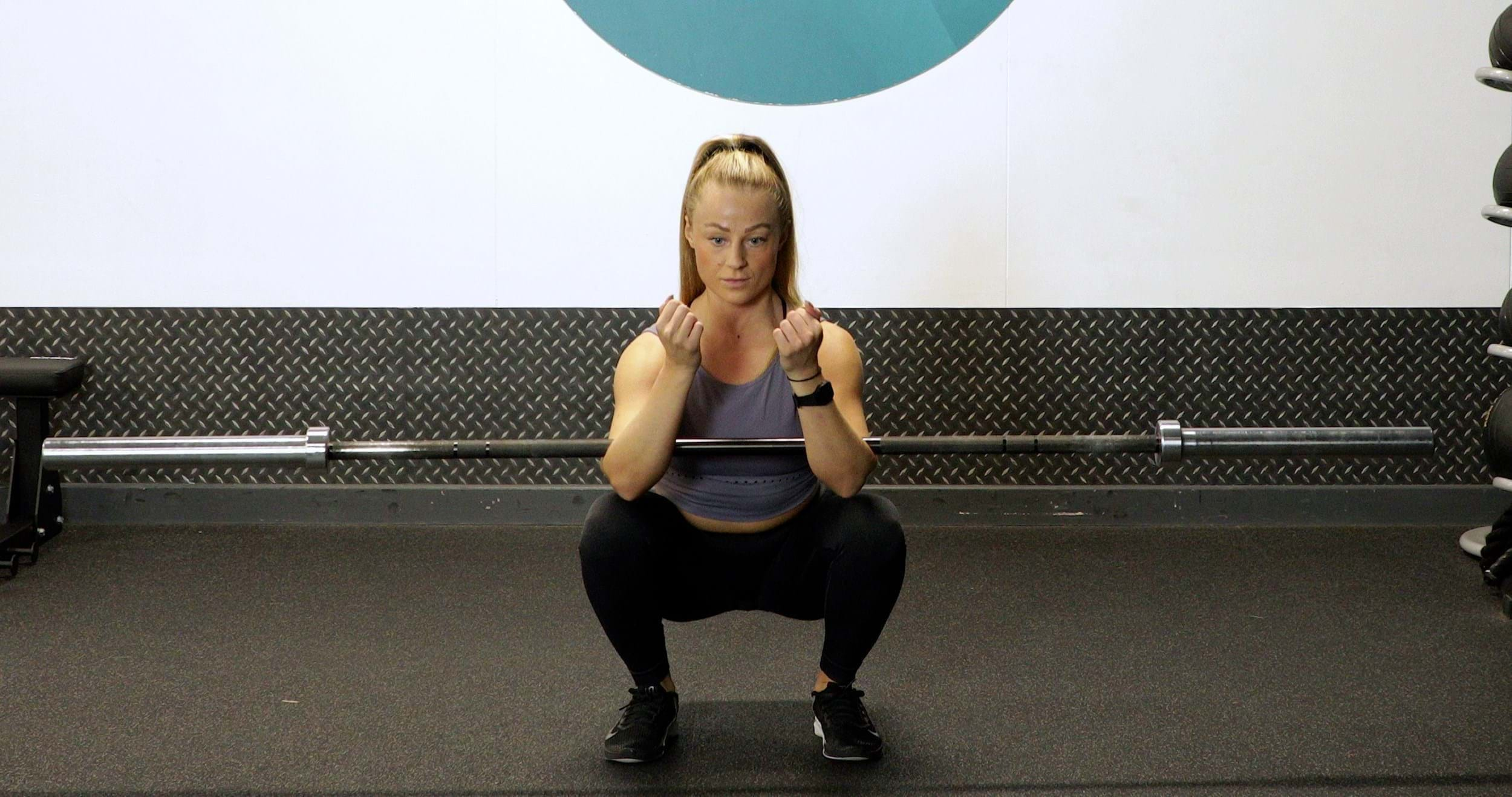Zercher Squats
What Are Zercher Squats?

The Zercher squat is a front-loaded variation that requires the weight to be distributed across the arms, in the crooks of the elbow. With similarities to the front squat, the Zercher can help to reach greater depth and activate the quads and glutes more.
The loading of the Zercher squat also means that the back muscles and core must work harder to keep the bar in position and ensure the body remains upright. You may find that incorporating Zercher squats carries over well to front squats and can improve your front squat form.
Check out some other squat variations: suitcase squats, pistol squats, squat jumps, broad jumps, bodyweight squats
Commonly Asked Questions On Zercher Squats
InstructionLike all squats, the Zercher squat targets the lower body muscles and is an effective way to build muscle and strength in the quads, glutes, calves, and hamstrings. The front loading means this variation places a greater demand on the upper back and quads, and also works the core more by challenging posture, coordination, and stability.
As the back is not directly loaded during the Zercher squat, this may also be a more suitable squat variation for those prone to lower back issues.
The Zercher squat challenges the body differently to the back squat. While the Zercher may place more emphasis on the quads and upper back, the awkward loading of the Zercher means that most people can load heavier with the back squat. This means the back squat can be more effective for strength and hypertrophy in the long term, however there is no reason you can’t incorporate both into your training.
Zercher squats are likely to feel harder than other squat variations due to the awkward loading of the barbell. This placement puts pressure on the arms and can be uncomfortable for some people. It also challenges the core to work harder to maintain an upright position, which makes the squat feel more challenging.
Those with limited ankle mobility may find it more difficult to maintain this upright posture.
Elevating the heels using small weight plates may be necessary to reach greater depth and ensure an upright position.
Zercher Squat Tips
You may find that positioning the barbell in the crooks of your elbow is uncomfortable. Start with a lower weight and work up to heavier weights to prevent discomfort when doing zercher squats.
To ensure a stable lift, pull the bar into your torso so that a straight bar path can be achieved, and the intended muscles are targeted to minimise injury risks.
How To Do Zercher Squats
Choose a barbell, either opting for a weight that you can safely pick up and rest in the crooks of your elbows, or an Olympic bar that is racked in the squat rack.
If opting for the squat rack, set the barbell just below your chest and ensure the safety pins are positioned just below the bottom of your squat. You can test this by performing a bodyweight squat and pausing at the bottom of the movement to see where the safety pins should go.
To unrack the barbell, position yourself so that your feet are directly underneath the bar and squat down slightly to get your elbows under the bar. Allow the bar to rest in the crook of your elbow before crossing your arms over and bringing each hand towards the opposing shoulder.
Extend your legs and stand tall before taking 3 steps back out of the rack. Adopt your squat stance by finding a foot positioning that feels comfortable for you. Some may prefer taking a wider stance, while others may be better suited to a narrower stance. Once you’ve found your foot position, slightly externally rotate your feet so that the toes are pointing outwards.
Engage your core and begin to squat down by pushing your hips back while simultaneously bending at the knee, making sure to keep your chest raised. As you bend down, push your knees outwards so they do not cave.
Squat down until your thighs are parallel to the floor, or just below.
Reverse the movement by pushing the ground away through both feet. Make sure to drive through the whole of each foot and not just the heel.
As you return to standing, make sure keep a soft bend in the knees. Lightly squeeze the glutes but avoid pushing your hips too far forward.
If you’re not sure if any of the above exercises are suitable for you, please consult your doctor before you start it. Need guidance on how to perform the exercise? Ask a personal trainer at your gym.